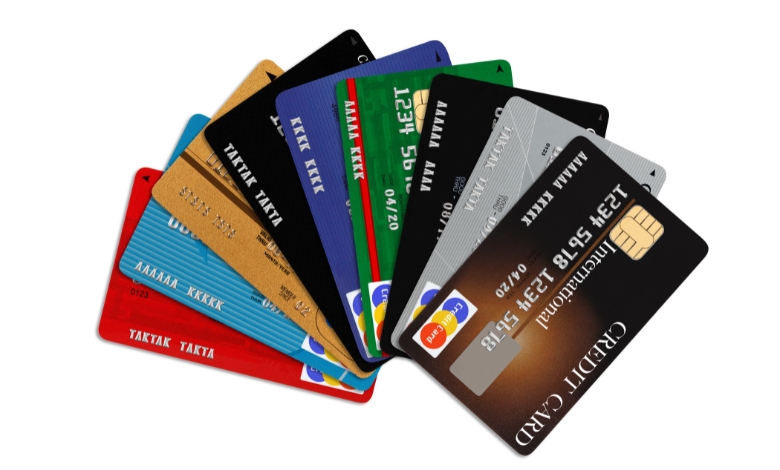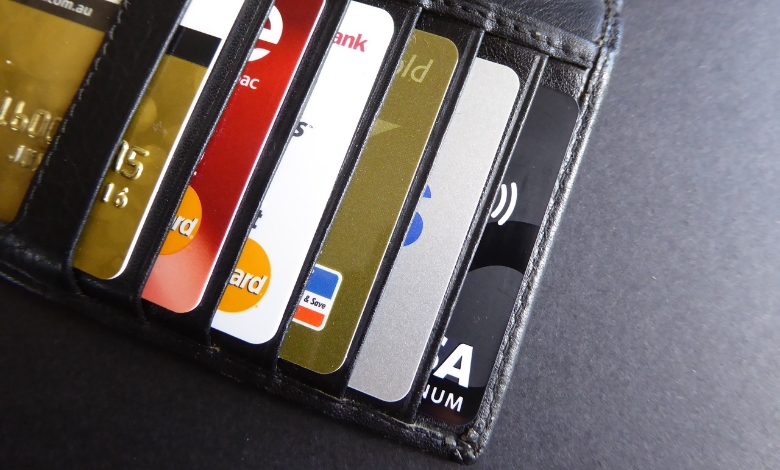Do business credit cards go on a debt schedule? Learn how to effectively manage business credit card debt by incorporating it into a debt schedule.
Overwhelmed by the financial side of my business, I was at my office surrounded by stacks of receipts and bills.
Though it appeared like a lifeline for daily needs, I had recently gotten a new company credit card and wasn’t sure how to include it into my financial planning.
I went to a neighbourhood small business finance workshop one afternoon.
The speaker, a seasoned accountant, discussed a business debt schedule.
She described how this instrument tracks all outstanding debt, including corporate credit cards, lines of credit, and loans.
It made sense to me suddenly: I couldn’t make wise financial decisions without knowing all my debts.
Curious and rather shy, I questioned, “Do business credit cards go on a business debt schedule?”
Emphasizing the need of including all kinds of debt for an appropriate assessment of the financial situation of the business, the accountant grinned and agreed.
Monitoring these debts, she said, helps one prevent cash flow issues, better prepare for future costs, and raise the credit score of the company.
That day transformed my approach to handle company finances.
I returned to my workplace, compiled all of my debt records, and produced a thorough calendar including my new company credit card.
This clarity helped me to feel more confident about managing money and started my company on a route of consistent expansion.
A recent survey claims that 69% of small businesses handle daily expenses using credit cards.
I will go over in this blog why small firms should include business credit cards in a debt schedule and their advantages.
Let us start.
Article Breakdown
What is a Business Debt Schedule?

A business debt schedule is a comprehensive record of all a corporation owes. It comprises details like:
- Lender names
- Loan balances
- Interest rates
- Payment due dates
- Monthly payment amounts
This document guarantees companies to keep a clear view of their financial responsibilities, so enabling proper debt management. Particularly when looking for further financing or investment, it is a key element for both internal financial planning and outside reporting.
Business Credit Cards

Common financial tool used by businesses to control costs and establish credit is business credit card. They give rewards, flexibility, and the chance to simplify purchasing. Like any kind of credit, they are debt, nevertheless, which needs careful management.
Why Include Business Credit Cards in Your Debt Schedule?
- Precise Financial Picture: Including credit card debt on your debt plan offers a whole picture of your financial responsibilities. Making wise financial decisions depend on this openness.
- Payment and Interest Management: Generally speaking, business credit cards have higher interest rates than other types of debt. Monitoring these in your debt plan allows you to avoid expensive interest accruals and plan timely payments.
- Creditworthiness: Lenders and investors evaluate a company’s whole debt load while deciding whether or not to provide credit or investment. Including credit card debt, a full debt schedule shows good financial situation.
How to Structure Your Debt Schedule?

Use these guidelines to properly include business credit cards into your debt calendar:
- List every business debt. Start with an exhaustive list of all your debts—including credit card, line of credit, and loan obligations. Make sure you exactly record every aspect.
- Sort debt types such long-term and short-term obligations. Usually falling under short-term debt, business credit cards are not paid off for very long.
Detail Credit Card Information:
- Issuer Name: The name of the issuer—the bank or institution that produced the card.
- Credit Limit: The highest amount one may borrow on the card.
- Current Balance: The present debt.
- Interest Rate: Applied to outstanding balance annual percentage rate (APR).
- Minimum Monthly Payment: The lowest amount owing every month.
- Payment Due Date: The date the minimum payment is due.
Example Format:
| Debt Type | Lender/Issuer | Credit Limit | Current Balance | Interest Rate | Minimum Payment | Due Date |
| Credit Card | Bank A | $50,000 | $10,000 | 18% | $500 | 15th |
| Credit Card | Bank B | $30,000 | $5,000 | 20% | $300 | 20th |
| Term Loan | Lender C | N/A | $100,000 | 6% | $2,000 | 1st |
| Line of Credit | Lender D | $80,000 | $20,000 | 8% | Varies | 25th |
Important Tips for Handling Business Credit Card Debt

Maintaining financial health depends on good management of business credit card debt. Here are some ideas worth giving thought:
Review and edit the debt schedule often
One can quickly modify their financial situation. Frequent updating of your debt schedule guarantees that it accurately represents the current state of affairs. This kind of practice enables proactive management and helps to spot possible problems early on.
Give priority to high-interest debt
Many times, business credit cards feature higher interest rates. Give paying off these loans top priority in order to lower general interest rates. Using a focused repayment plan—that is, the avalanche approach—that pays off high-interest debt first can help.
Maintaining Credit Utilization Ratio
Your credit score is much influenced by the balance-to-limit ratio, your credit use ratio. By routinely reducing balances, try to keep this ratio below 30%. If your credit limit is $10,000, for instance, attempt to maintain a balance less than $3,000.
Use rewards wisely
Many company credit cards provide incentives such as travel points or money. Use these incentives deliberately to balance out company costs. Rewards schemes should not, however, entice you into overpaying.
Track employee consumption
If staff members own business credit cards, establish rigorous policies and close monitoring. This guarantees that all expenditure lines up with corporate goals and helps to stop abuse.
Why Business Credit Cards Deserve a Spot in Your Debt Schedule?

Enhanced Financial Management
A whole picture of all debts—including credit cards—improves financial planning. It helps to define reasonable financial goals and facilitates improved cash flow control.
Improved Reputation
Presenting a complete and well-kept debt schedule can help you to build credibility with investors and lenders. It shows open financial practices and sensible management.
Risk Mitigation
Closely tracking all debt—including credit card balances—helps companies spot any financial hazards early on. This makes prompt treatments possible to prevent problems from becoming more severe.
Possible Challenges and How to Tackle Them

Dealing with corporate credit card debt presents unique difficulties for you. Knowing them and putting ideas into use can help to keep financial stability.
Challenge: High Interest Rates
Negotiate with credit card issuers for reduced interest rates or move balances to cards with better rates. Moreover, concentrate on rapidly paying off high-interest debt to reduce interest payments.
Challenge: Cash Flow Constraints
The challenge is cash flow restrictions; the answer is to keep a buffer in your company accounts to control variations. Sort your spending first, then if needed take into account other financing choices with better terms.
Challenge: Keeping Track of Multiple Cards
Tracking several cards presents a challenge. Tracking all credit card transactions and balances can be accomplished using financial management tools or accounting software. This automation saves time and guarantees correctness.
Practical Steps for Business Owners
Use these easy guidelines to properly include business credit cards into your debt plan and keep financial stability:

- Combine credit card details: Collect all pertinent information about your business credit cards, including agreements and statements.
- Create or update your debt schedule: Create or change your debt plan using financial tools or a spreadsheet including all company credit card information.
- Monitor Regularly: Create a calendar for consistent debt review. Monthly reviews are advised to keep current with modifications.
- Implement Debt Management Strategies: Use tactics including keeping a low credit use ratio, giving high-interest debt first priority, and carefully leveraging rewards.
- Seek Professional Advice: See a financial advisor or accountant for expert advice if handling your company bills gets taxing.
Wrapping Up
Modern corporate finance cannot be without business credit cards since they provide convenience and flexibility. They also, however, reflect a debt you have to carefully control. Including them in your company debt schedule helps you to see your whole financial responsibility, hence improving financial planning and decision-making.
Frequently Asked Questions (FAQs)
1) Are credit cards included in a debt schedule?
Indeed, a debt schedule should contain credit cards as they are a financial commitment that has to be controlled.
2) What is a business schedule of debt?
A business schedule of debt is a spreadsheet or document containing all of the debts together with their relevant information, including balance, interest rates, and payment due dates. It lets one better handle financial responsibilities.
3) Where may I locate the debt schedule of a company?
The financial statements of a corporation reveal their debt schedule; alternatively, accounting tools used for financial management can provide it. As part of their financial reporting process, a corporation might also decide to provide lenders or investors with its debt schedule. If you are an external shareholder looking at a company’s debt schedule, nevertheless, it is advisable to speak with the company directly.
4) Is a debt schedule the same as a balance sheet?
No; a debt schedule and balance sheet have different uses. At a given moment, a balance sheet shows a company’s assets, liabilities, and equity taken as a whole. A debt schedule concentrates specifically on the debts of the company and their related information.
Disclaimer: The material offered serves only for instructional and informative needs. It isn’t financial advice, either. For professional advice catered to your particular company requirements, please see an accountant or financial counselor.



